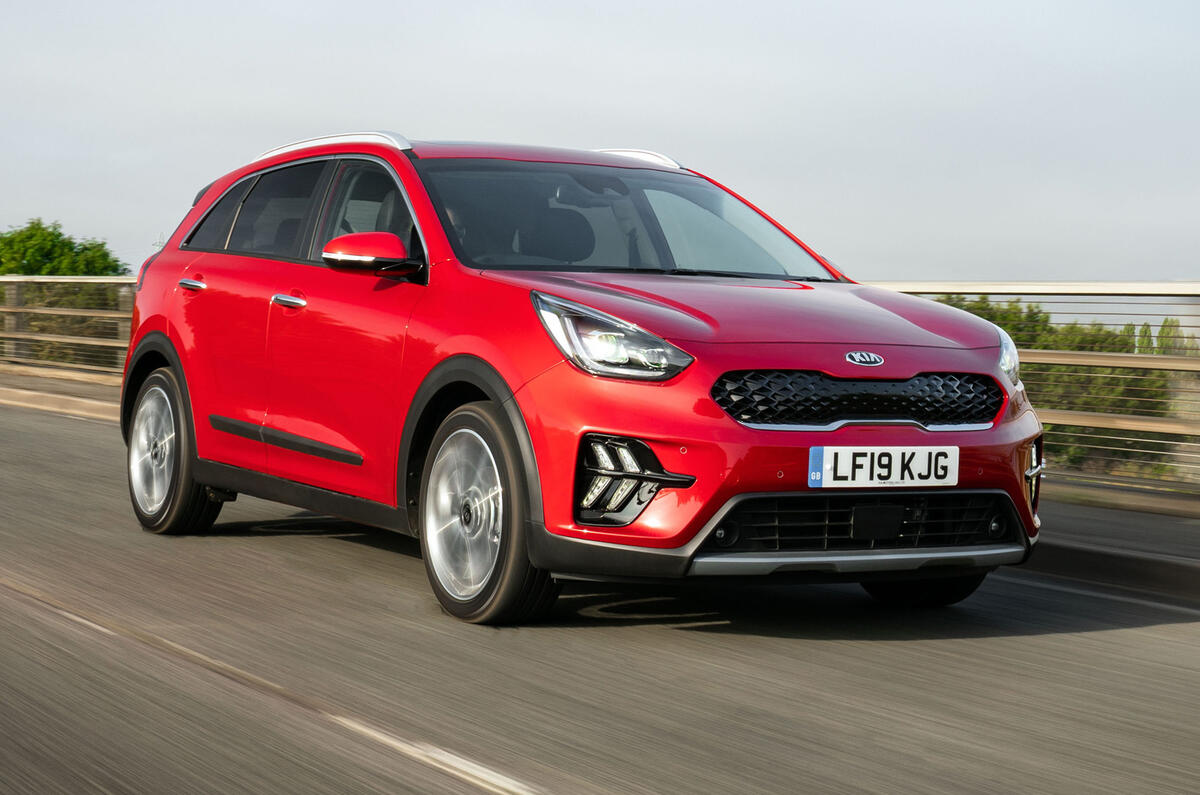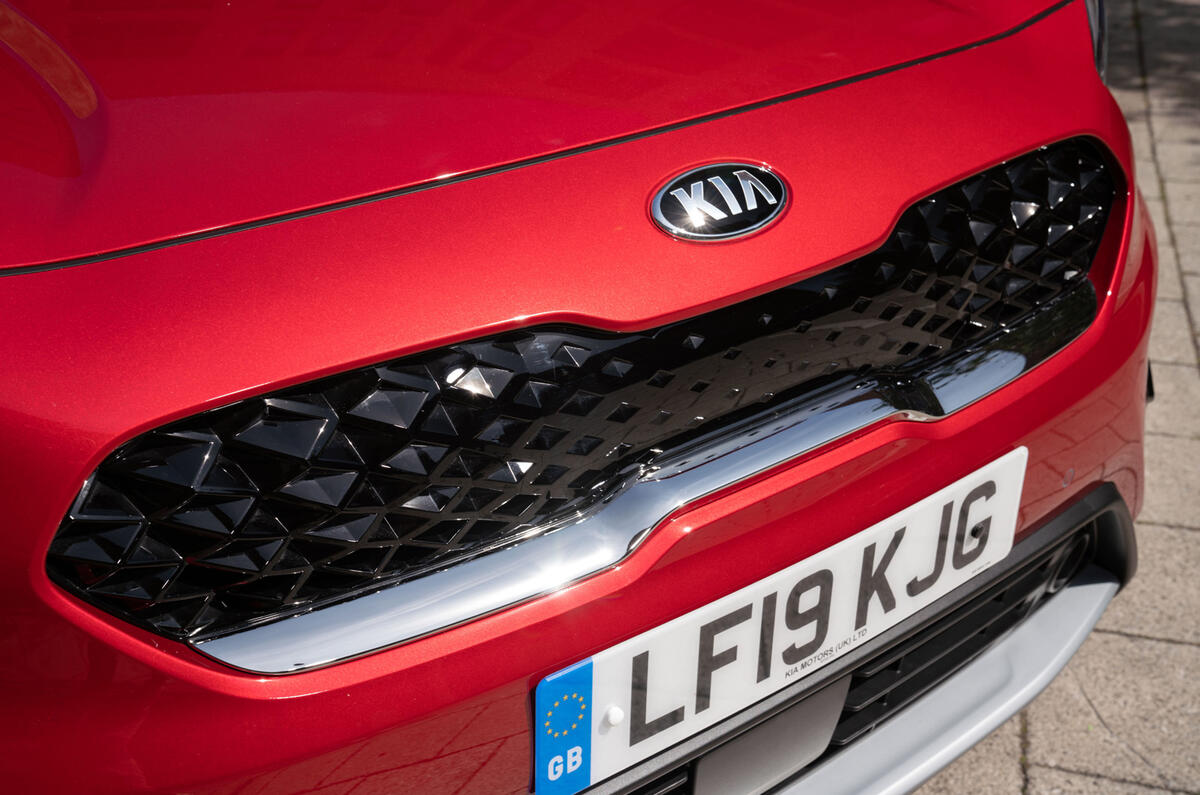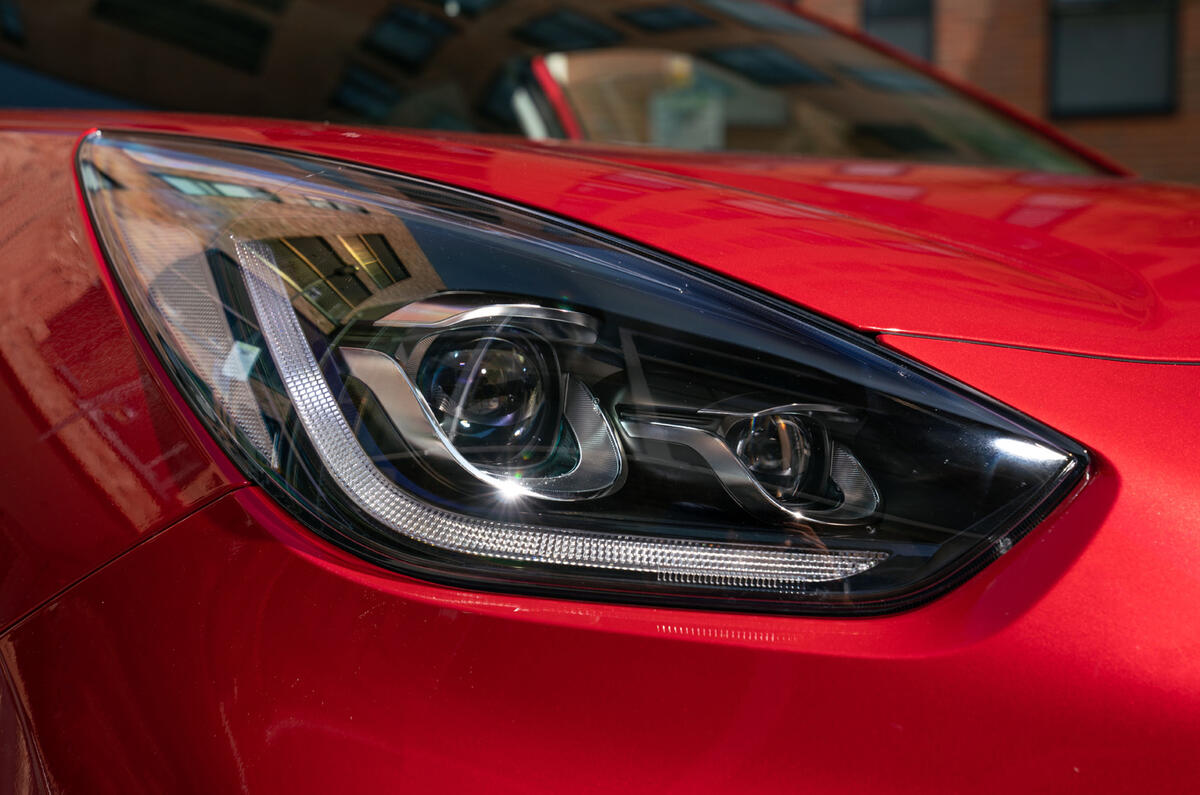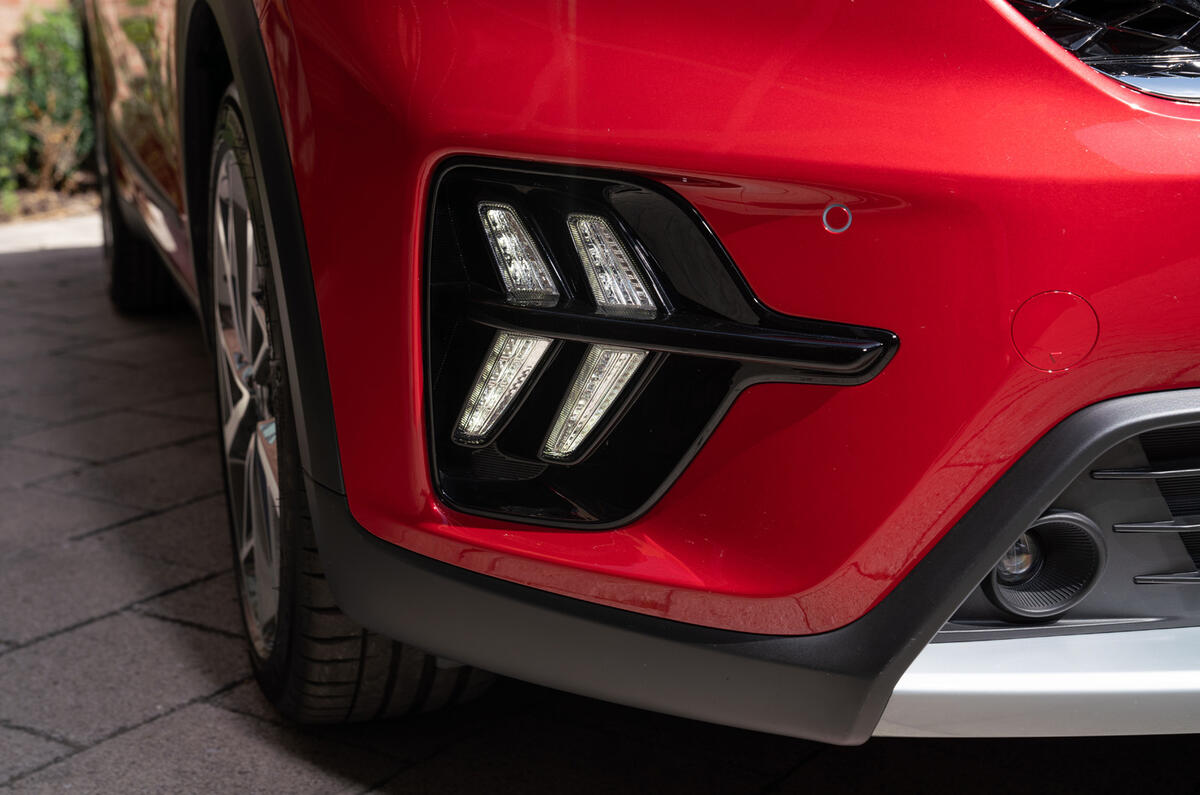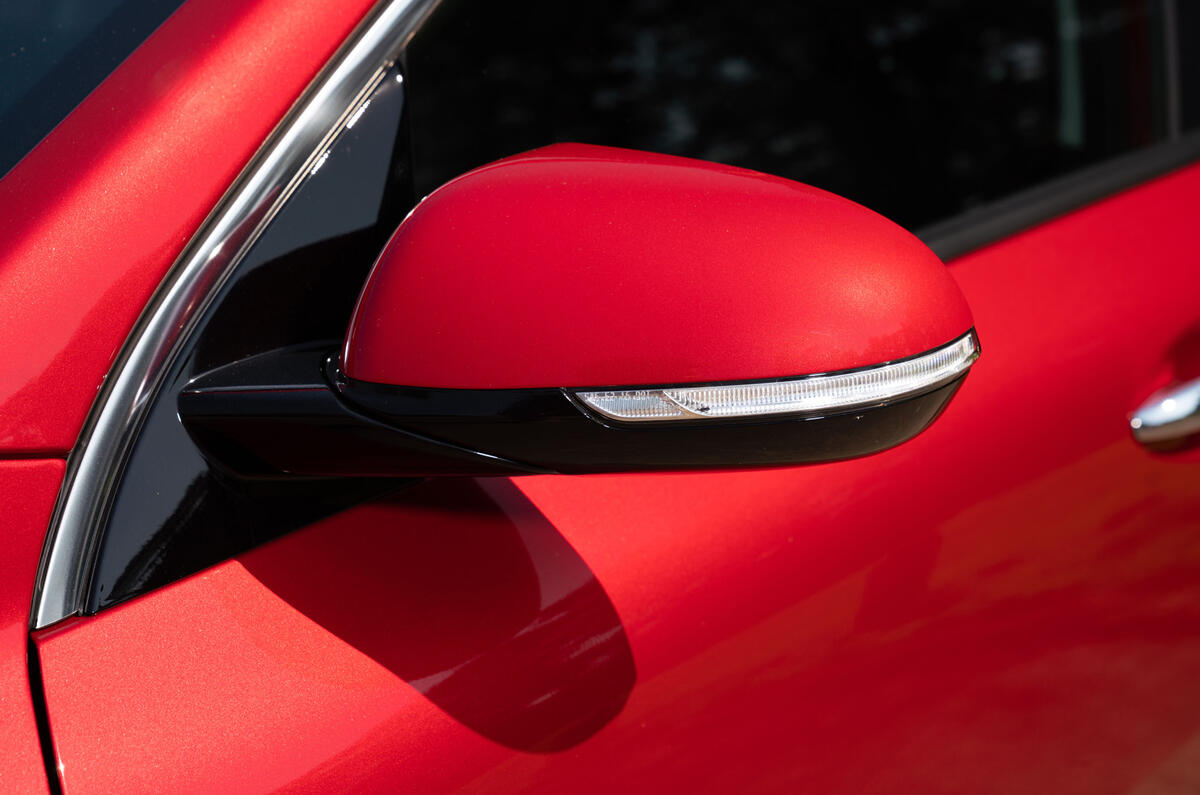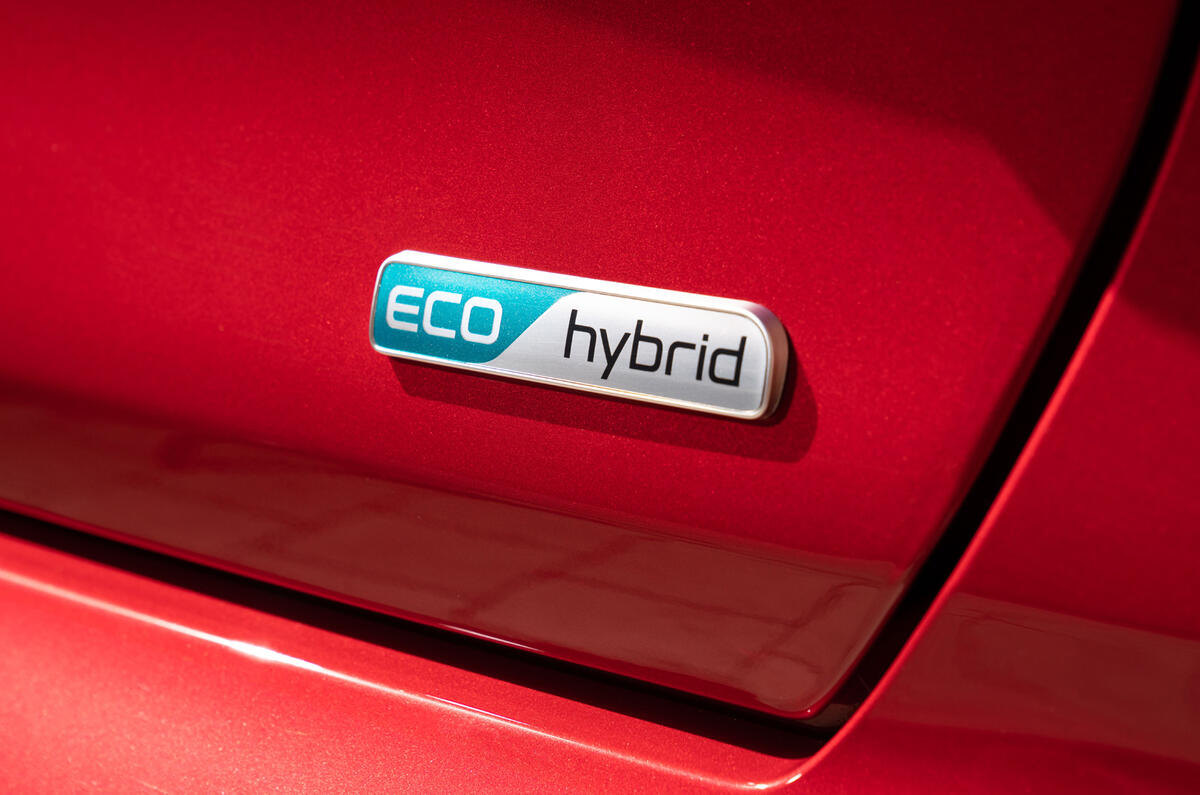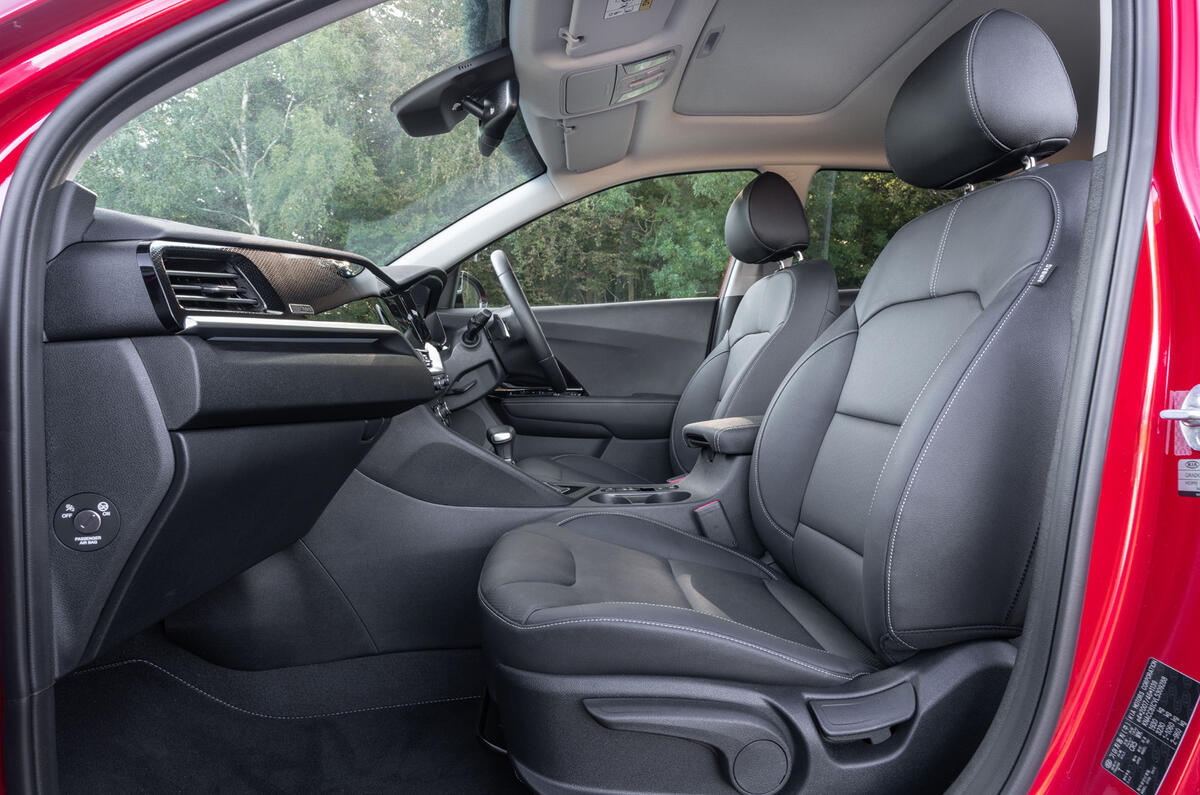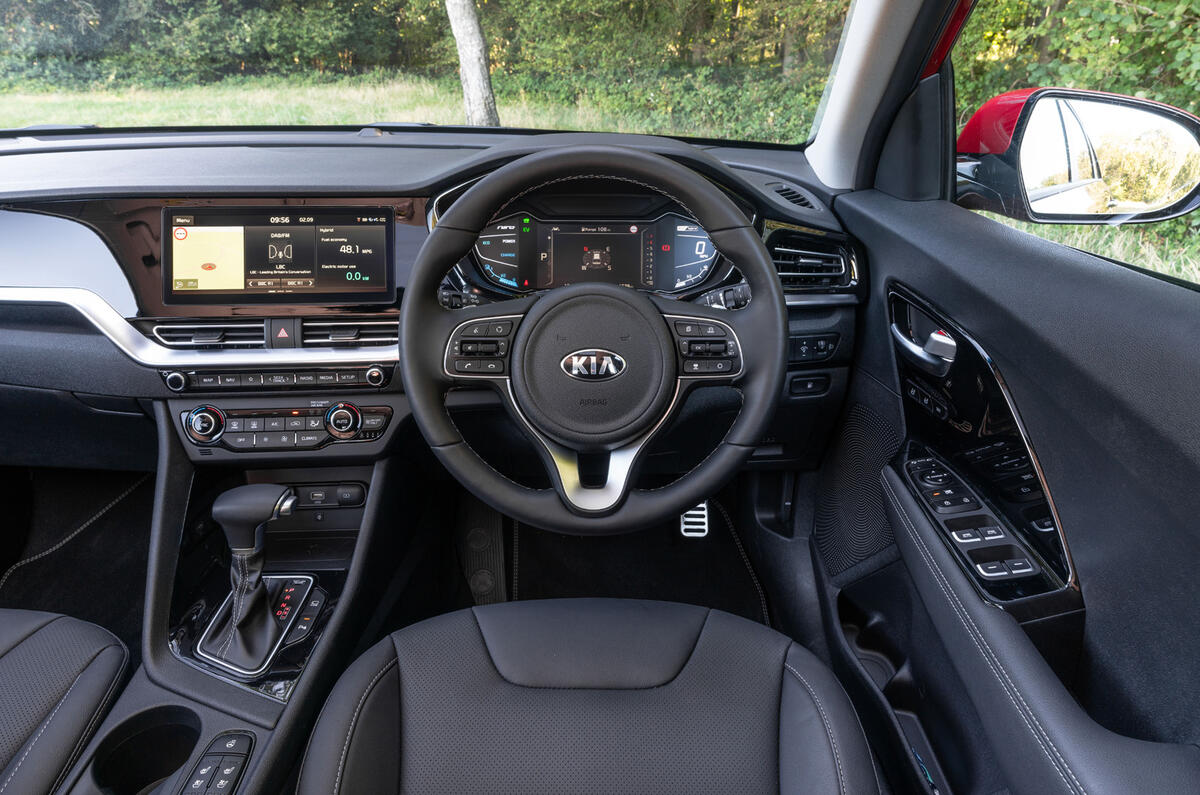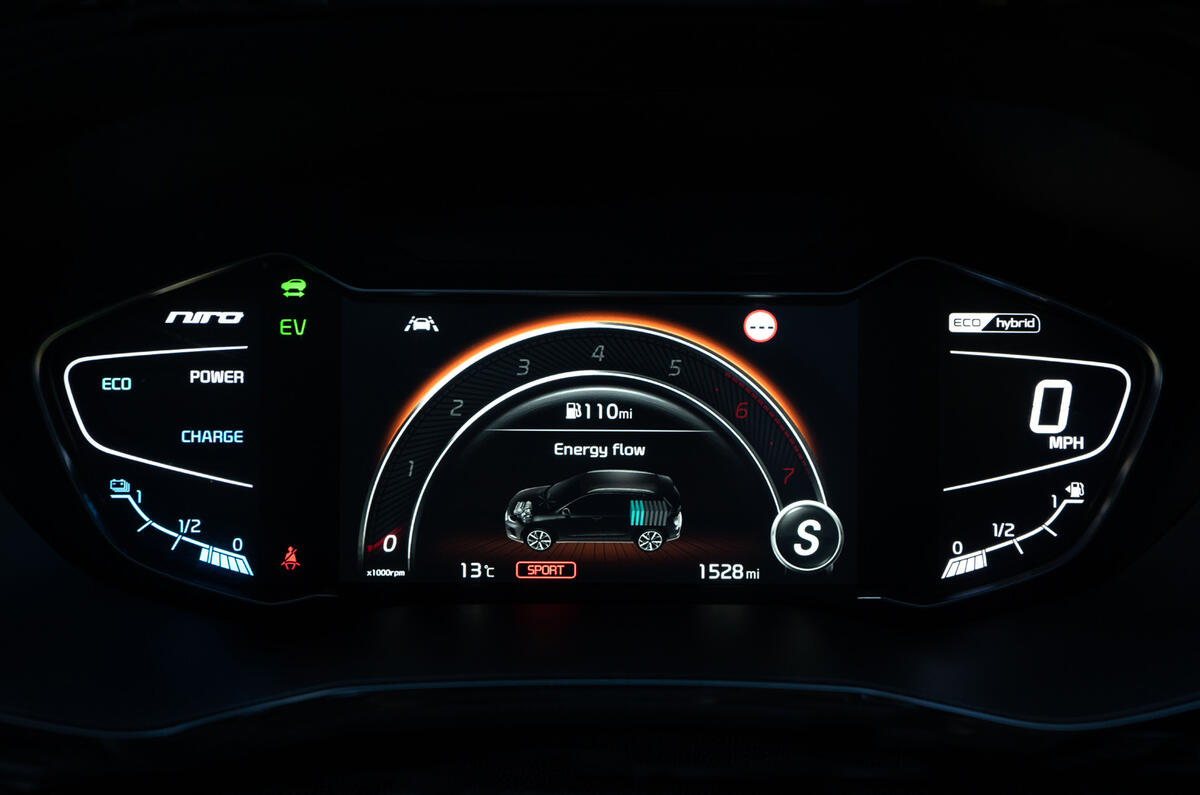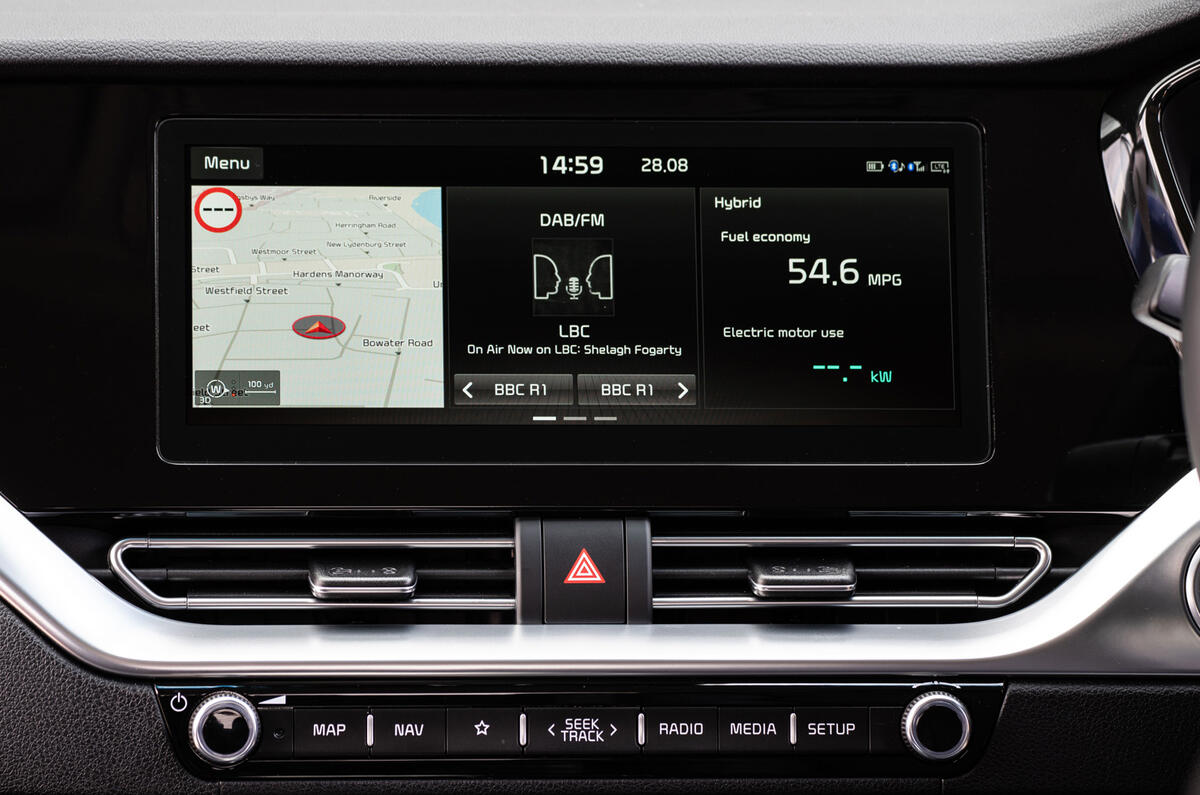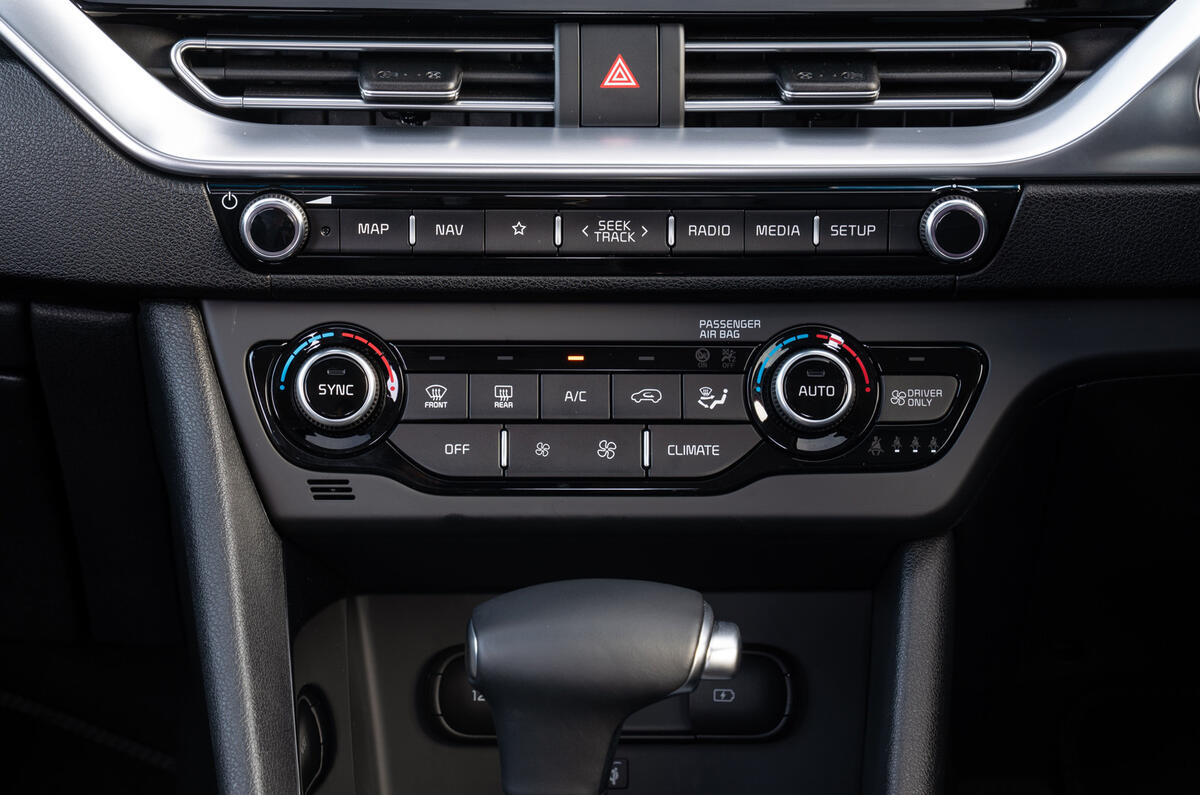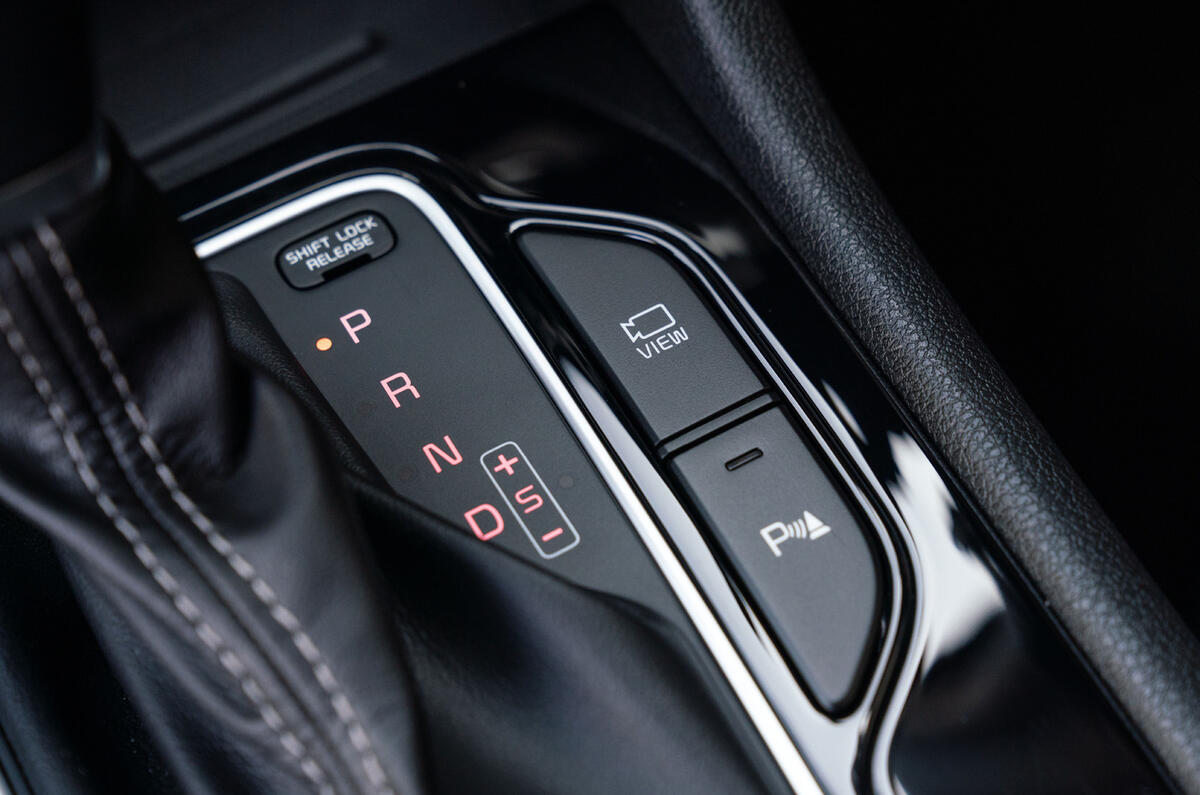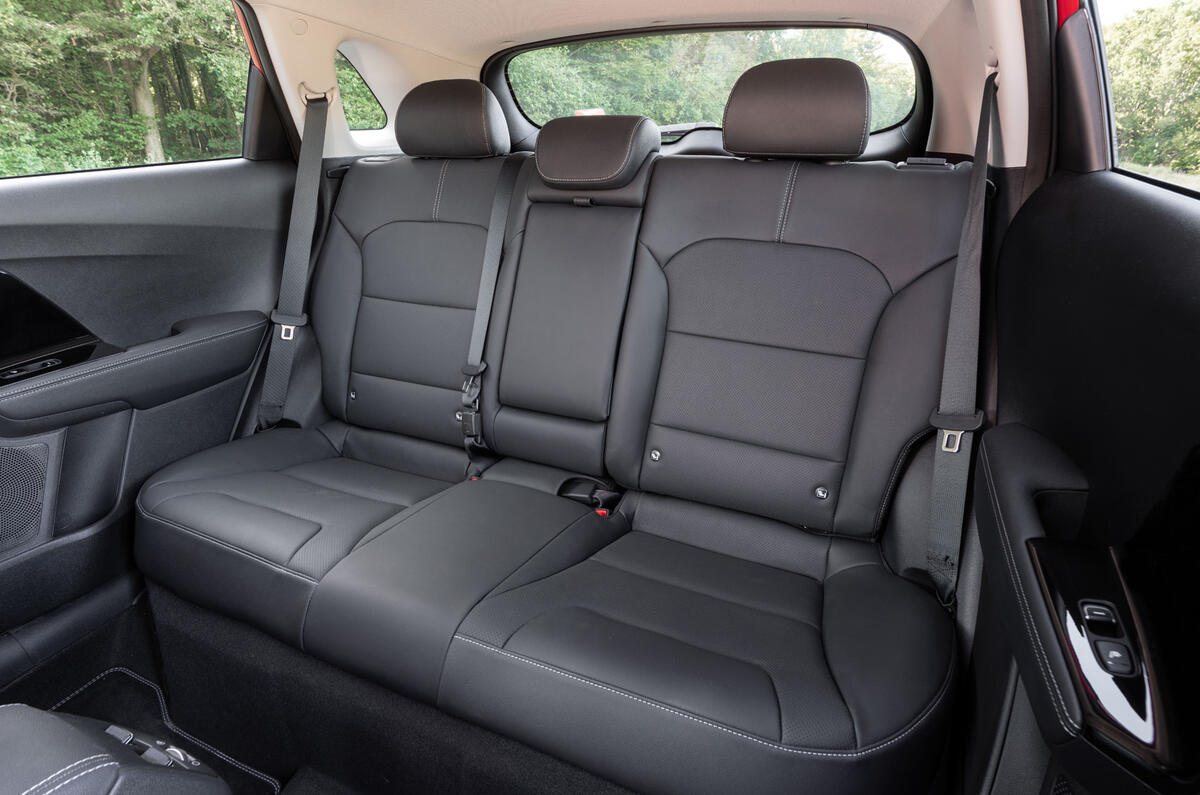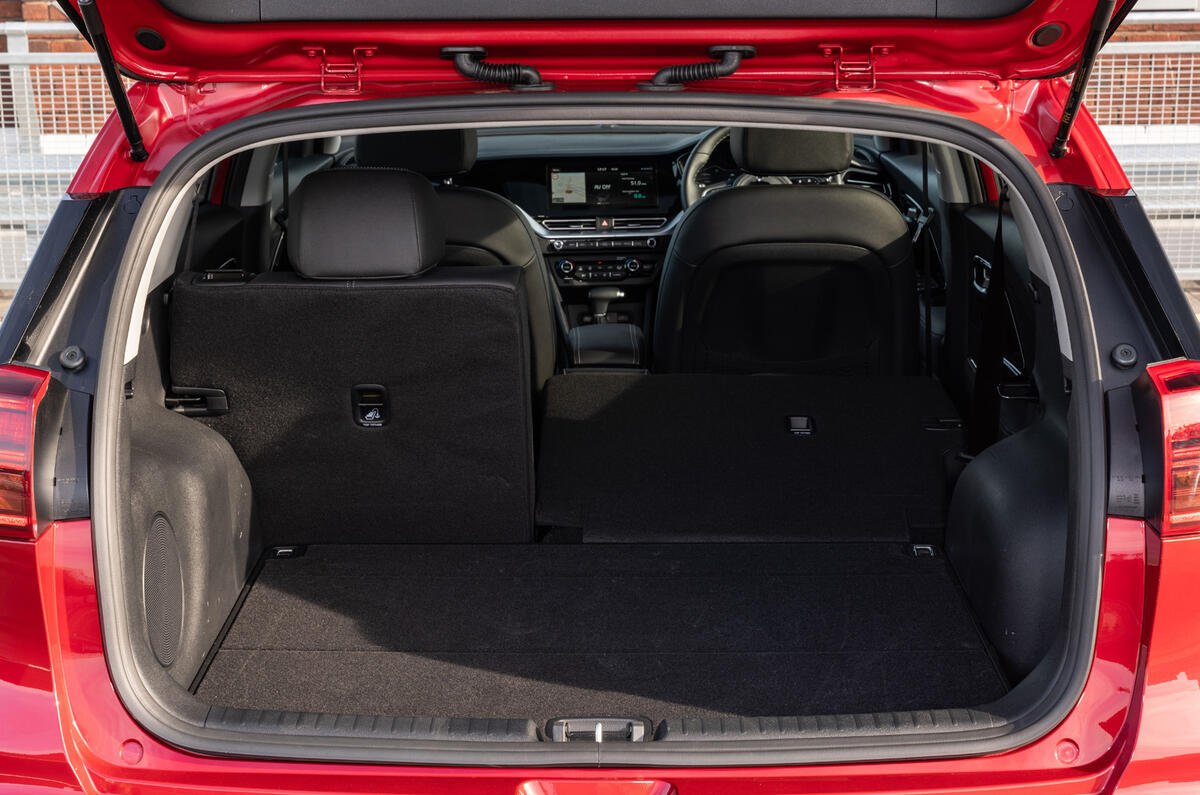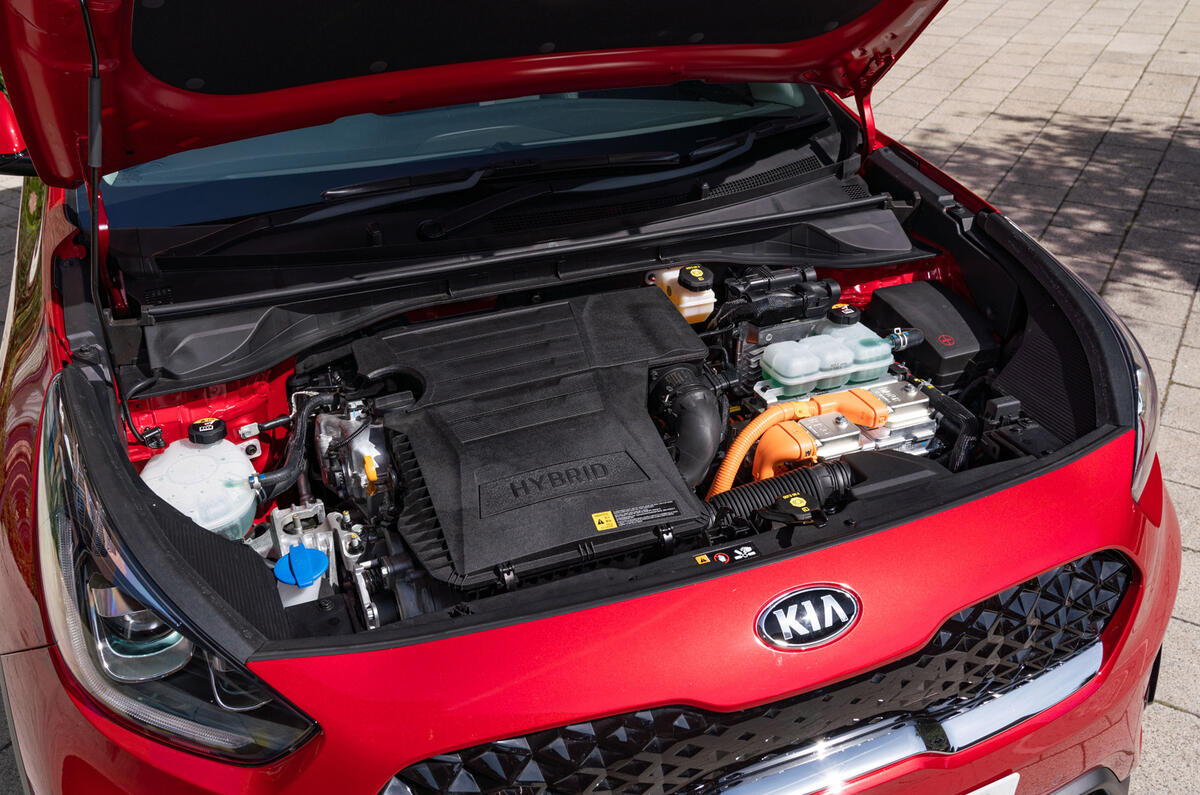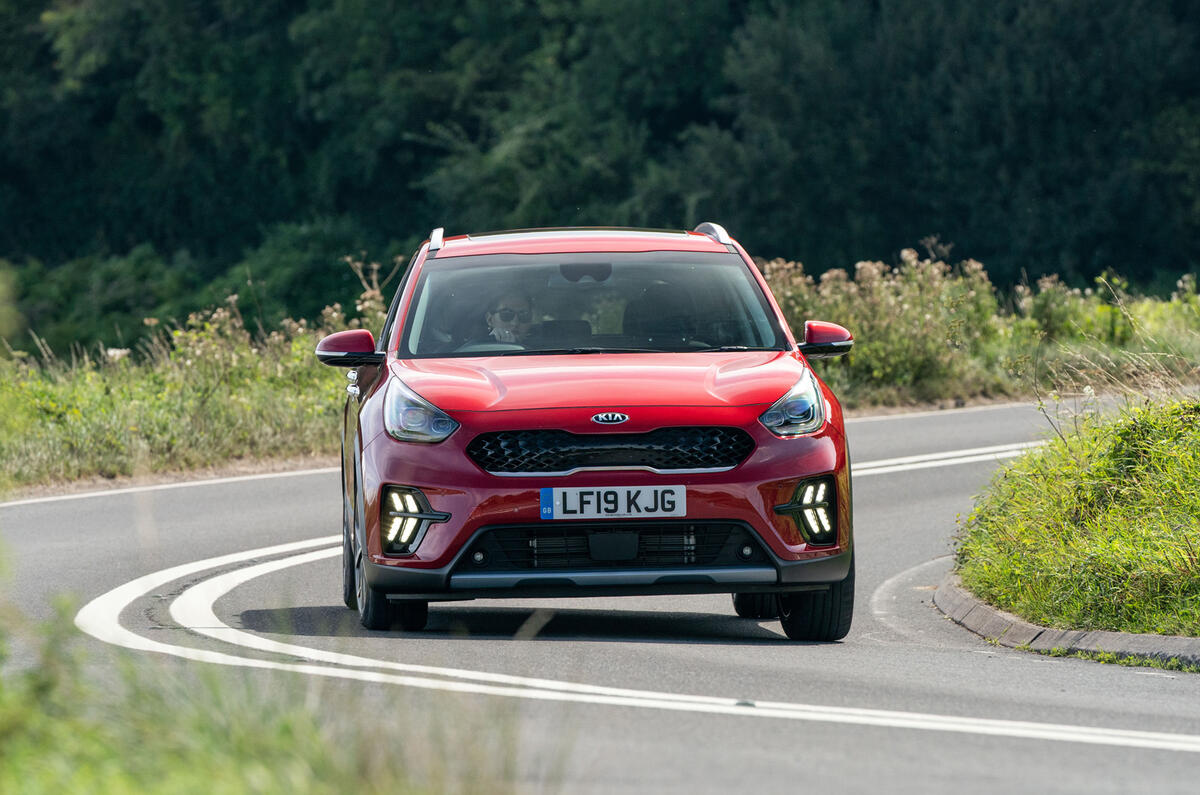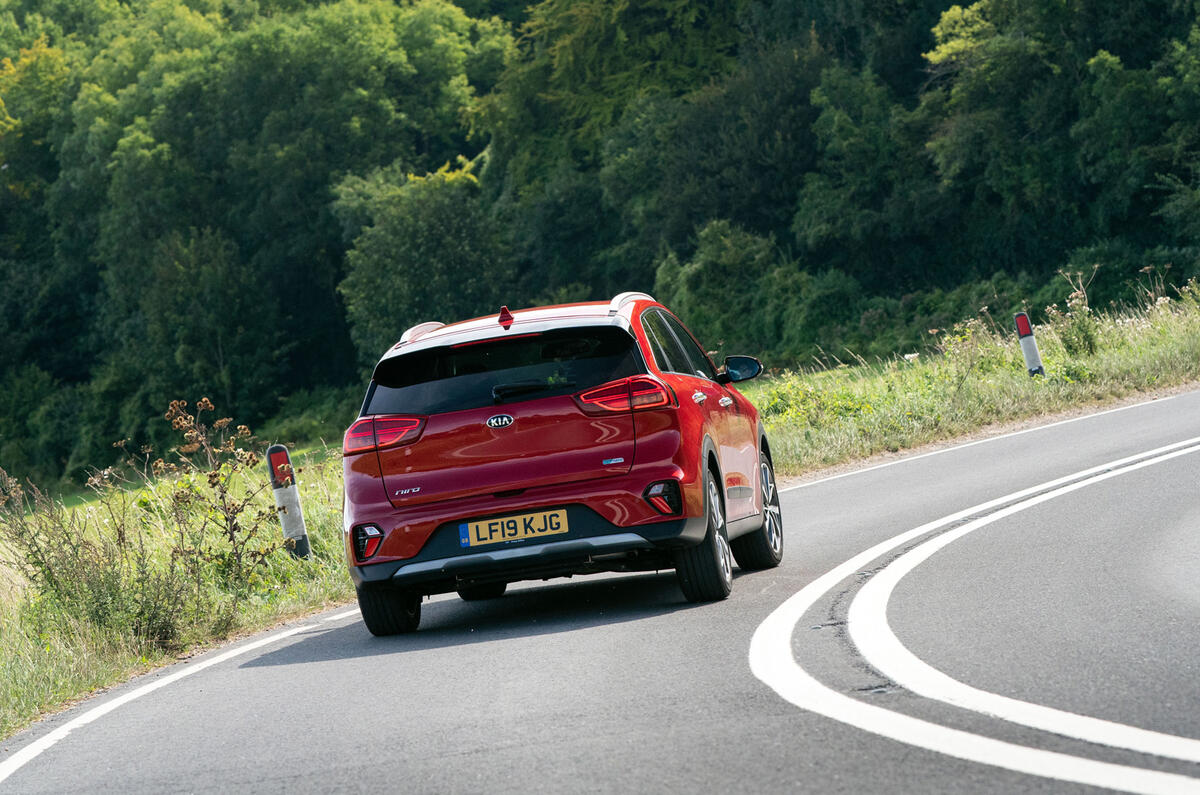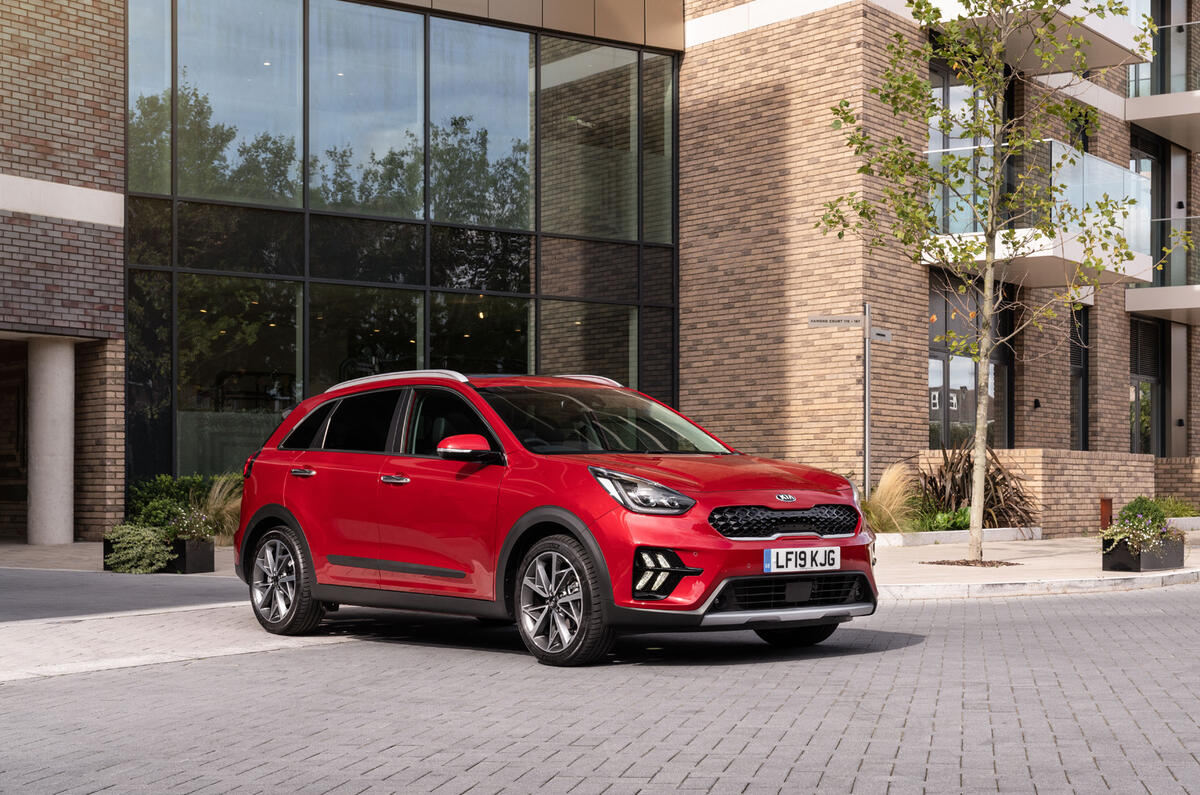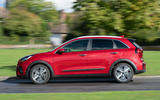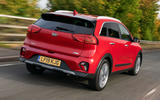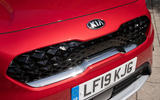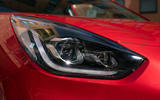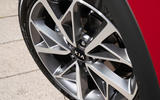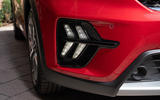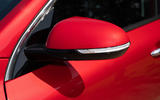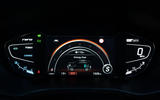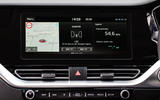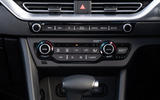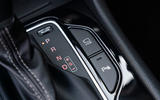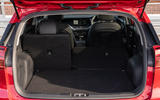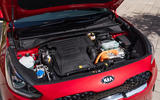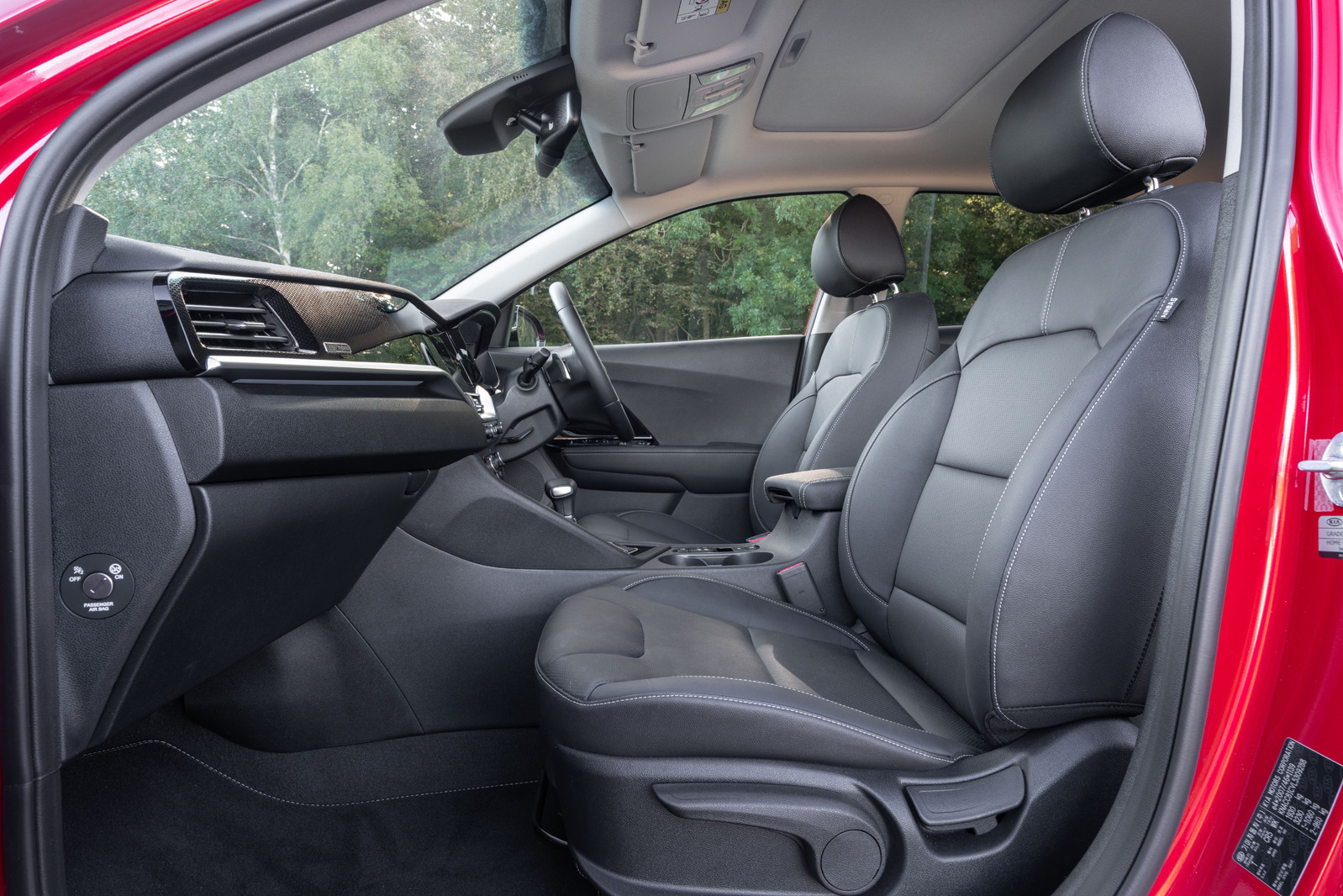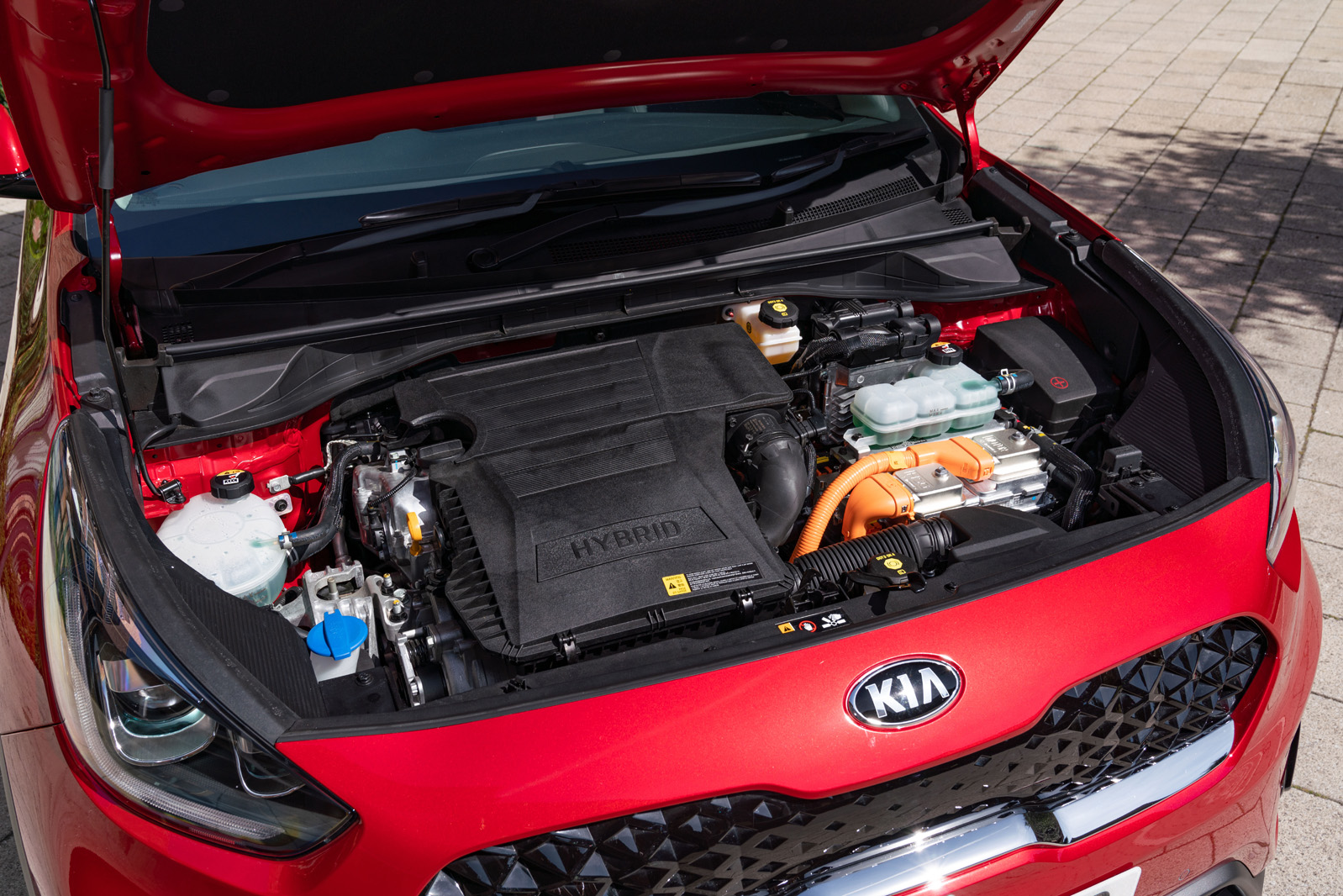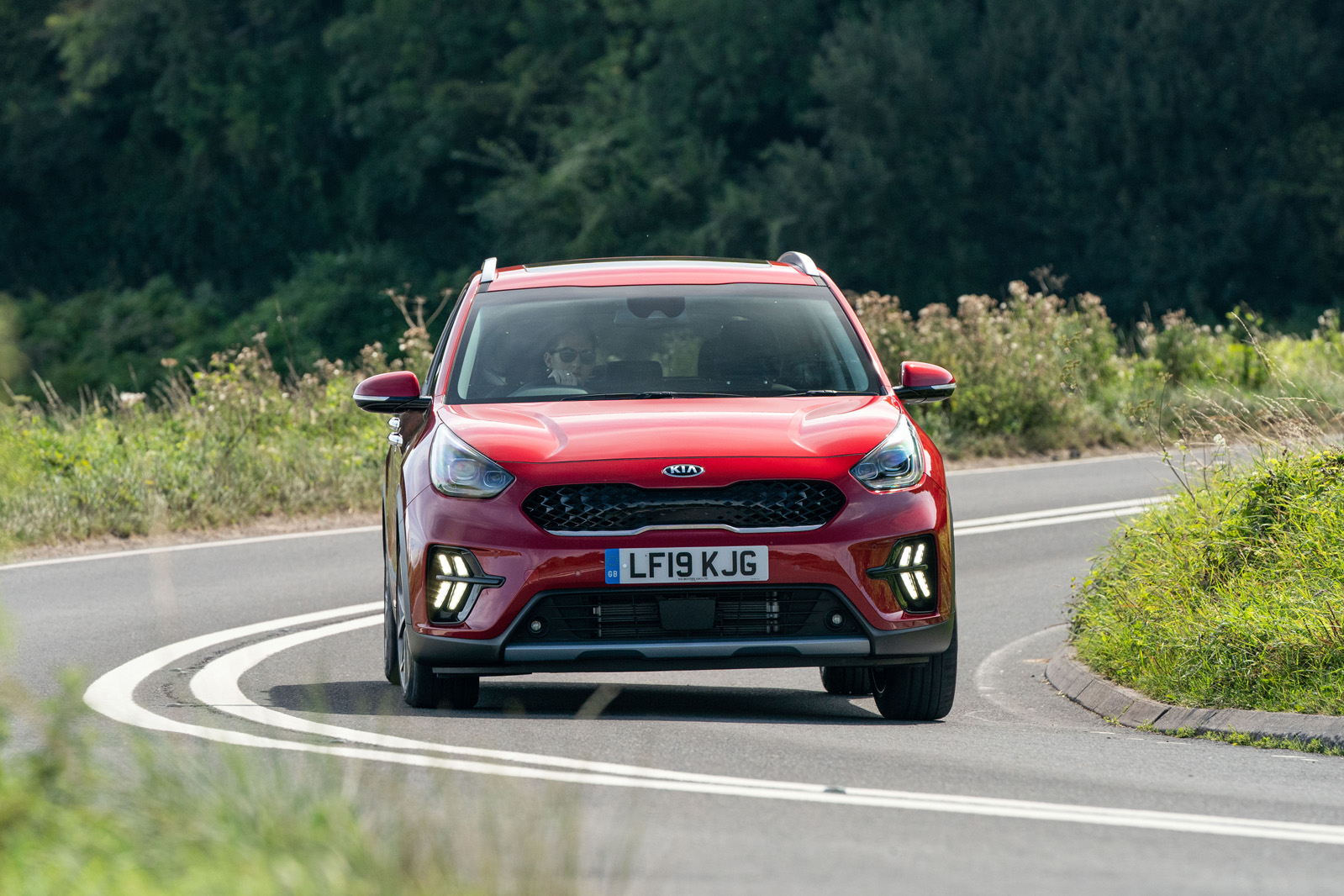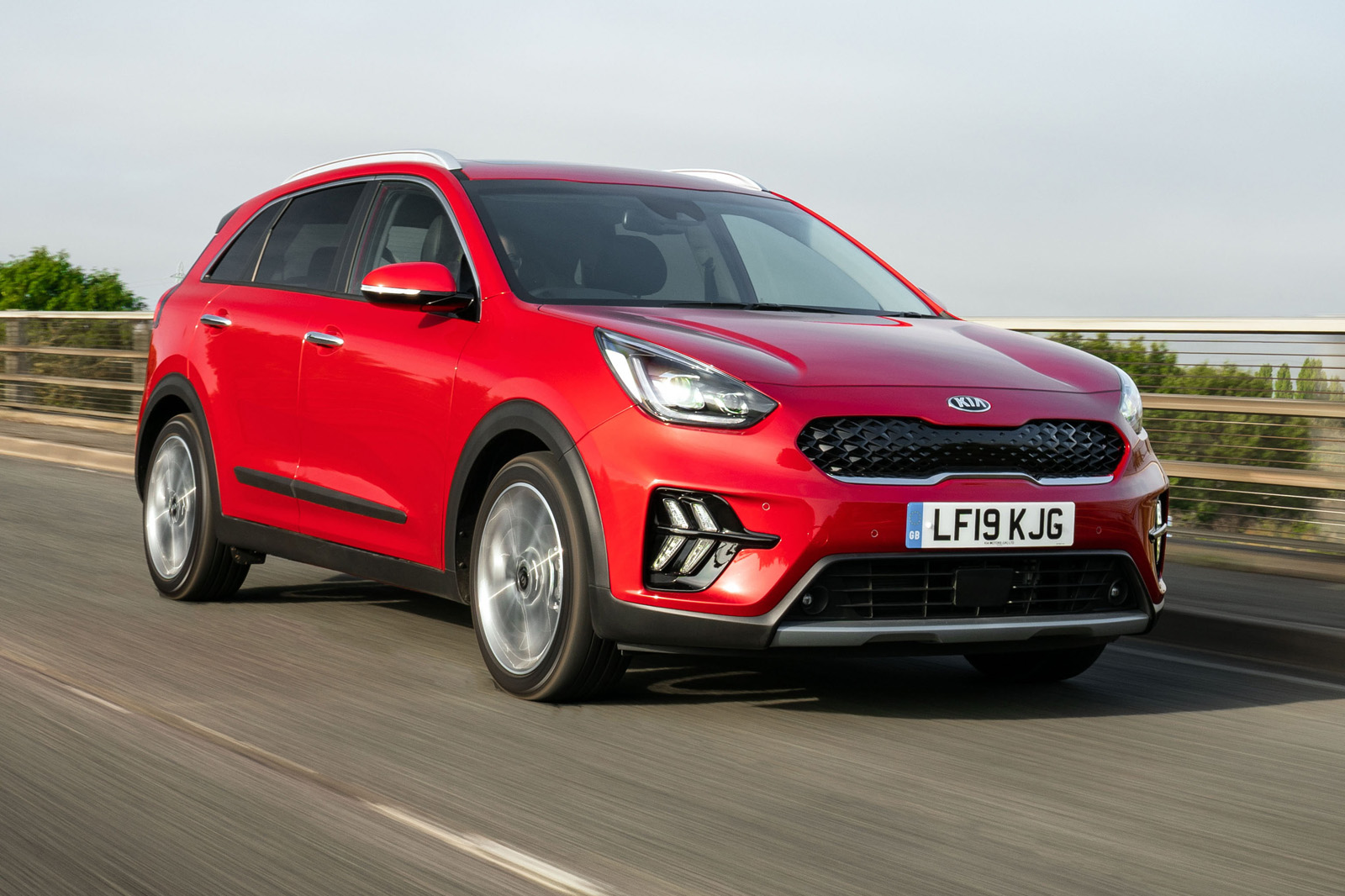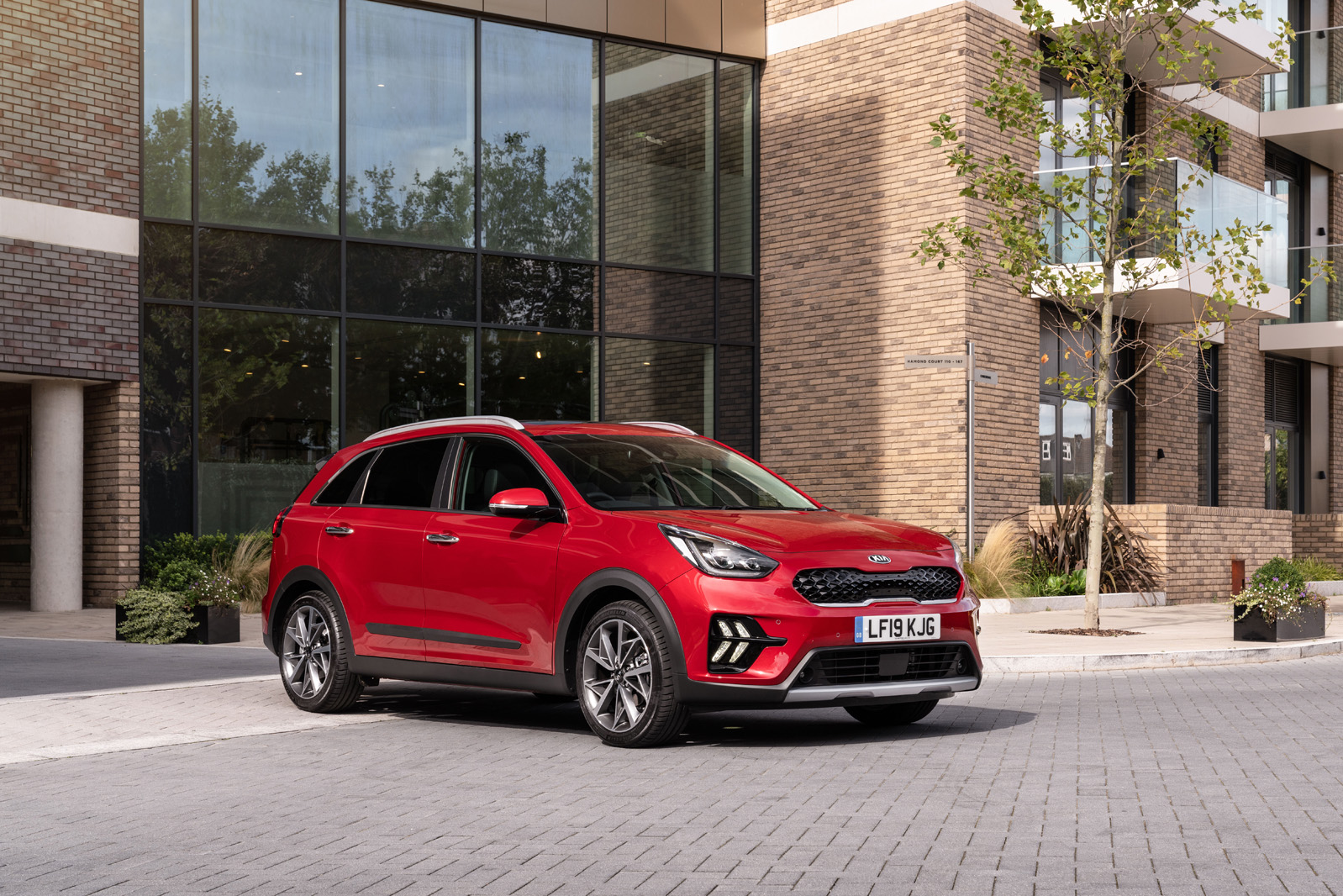Endowed with a reasonably generous wheelbase of 2700mm (eclipsing that of both the Skoda Karoq and Nissan Qashqai), the Niro is decently roomy inside.
Space for five plus luggage was the model’s conventional design criteria, and although that leaves one person feeling inevitably short-changed, the hybrid is accommodating of adults in both the front and back.
However, its lack of genuine SUV-style height is noticeable. There’s the distinct feeling of plopping into a seat rather than stepping comfortably up into the cabin – and that’s a potentially crucial difference for some buyers looking for a crossover’s trademark elevated view.
The interior is unlikely to set many hearts racing. Its organisation is highly credible and the fit typically decent but, as ever, Kia tends to tick the essential boxes while leaving all the aspirational ones firmly unchecked, even with the improved materials of the 2020 update.
Those shopping around will find their fingertips better indulged by the latest Volkswagen Tiguan, and most likely their eyeballs, too.
Even so, the grade of plastics is generally good, the 2020 update bringing with it higher grade materials and sleeker looks. The temptation to go confusingly off piste with the hybrid readouts is well tamed; charge, eco and power dials in place of a rev counter are legitimate and perfectly legible, even on the 7in TFT instrument cluster that’s standard on the range-topping 4.
Up front, Kia has incorporated a new seat design, reportedly 1.3kg lighter than its current equivalent. It features a higher density of cushioning in slimmer bolsters and affords a reasonable level of comfort. It’s certainly superior to the rear pew, which is left wanting somewhat for padding.
There’s no backrest or slide adjustment in the back, either, although the Niro’s general spaciousness makes this non-essential.
The 382 litre boot is adequately proportioned without the need to move the seats, too, and it comes with the convenience of a luggage undertray (even if this does reduce the height of the load space somewhat). The 60/40 rear seats fold forward, providing 1380 litres of flat-decked capacity – provided you keep the hefty Z-fold floor in its upper deck position.
That’s not prodigiously big, but neither is there any impression on the inside that the Niro’s practicality is being impeded by its hybrid running gear. Although it’s worth bearing in mind that on the PHEV the increased size of the battery pack results in a reduction in boot volume to 324-litres.
Kia Niro Infotainment and sat-nav
Every Niro meets our bog-standard entertainment requirements and then some — a DAB tuner and Bluetooth connection are standard, as are Apple CarPlay and Android Auto, all accessed using an intuitive 8.0in touch screen.
Also included as standard on every version is a reversing camera, rear parking sensors, dual-zone climate control and part leather trim for the seats. There’s a comprehensive array of safety kit too, with adaptive cruise control and lane keep assist both featuring among the usual additions.
Moving up to the 3 gives you access to powered, heated and leather covered seats, wireless phone charging and the firm’s larger 10.25in infotainment system that features navigation as well as Kia Connected Services, providing traffic updates and speed camera locations for free for seven years
Those paying the premium for 4 trim benefit from an eight-speaker JBL Premium sound system, while those in the front getting ventilation for their seats and those in the rear getting to toast their behinds at the touch of a button.


